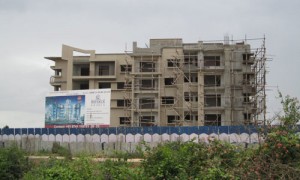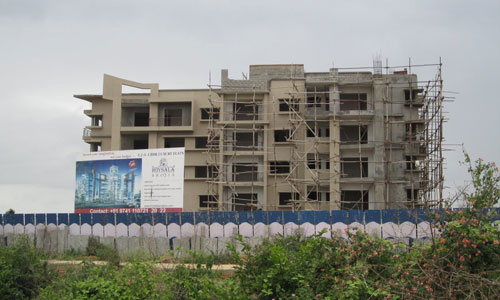 Track2Realty: Construction sector in the country is expected to witness increased workloads in the next twelve months despite the continuing challenges resulting from financial constraints as well as ongoing issues relating to the regulatory and planning environment.
Track2Realty: Construction sector in the country is expected to witness increased workloads in the next twelve months despite the continuing challenges resulting from financial constraints as well as ongoing issues relating to the regulatory and planning environment.
Significantly, the biggest obstacle to development according to the RICS India Construction Survey Q2 2013 is skill shortages. They are still visible across all areas such as quantity surveyors, other construction professionals, bricklayers, plasterers, plumbers, carpenters and electrician.
Commenting on the trend, Sachin Sandhir, Managing Director, RICS South Asia said, “In fact the growth of unskilled construction labourers has risen significantly over the years, from approximately 10.67 million in 1995 to approximately 25.60 million by 2005, depicting a CAGR of approx. 9.15%. If we were to assume that unskilled labour will continue to grow at the same pace, then by 2015 the number of unskilled workers in the industry will account for approximately 61.42 million by 2015 and a further 95.14 million by 2020.”
“It is therefore becoming essential that even the non-professional strata of the workforce engaged in the sector, have the essential skills that will enable them to meet the changing and ever evolving needs and demands of the built environment.”
The survey also notes despite other key challenges, insufficient demand, weather conditions, shortage of materials, and competition are some of the additional factor limiting the activity.
The survey shows despite the more challenging macro-economic environment workloads appear to be rising in most sectors including housing, commercial and infrastructure. A noticeable exception is the private industrial sector although even for this segment the decline in activity was more modest than in the preceding three month period. Within the housing segment, private housing is expected to do better in comparison to public housing.
The survey also shows that numbers for both employment and profit margins remain more upbeat than in the first quarter. The average anticipated increase in construction output over the next twelve months according to contributors to this survey is around 7% while the rise in employment and profit margins is put at between 5 and 6%.
Commenting on the findings of the report, Simon Rubinsohn, Chief Economist of RICS said, “The construction sector will continue to play a key role in underpinning the Indian economy over the coming years but given the significant infrastructure deficit that remains, more needs to done to address some of the obstacles to development whether it relates to the regulation and planning, skills or finance. The good news is that rising trend in profitability highlighted in the survey should be a key support for developers.”
While India’s construction sector continues to thrive with the rapid pace of urbanisation sustainability remains an important issue with most responses suggesting that clients will increase their budget allocations in the area than reduce them.
The survey shows that use of technology can also help in improving the activity significantly. In response to the question on the prevalence of Building Information Modelling (BIM), the results show that around one-third of those completing the survey have increased their usage of BIM. Significantly, this is most visibly the case in the area of design and cost management.





